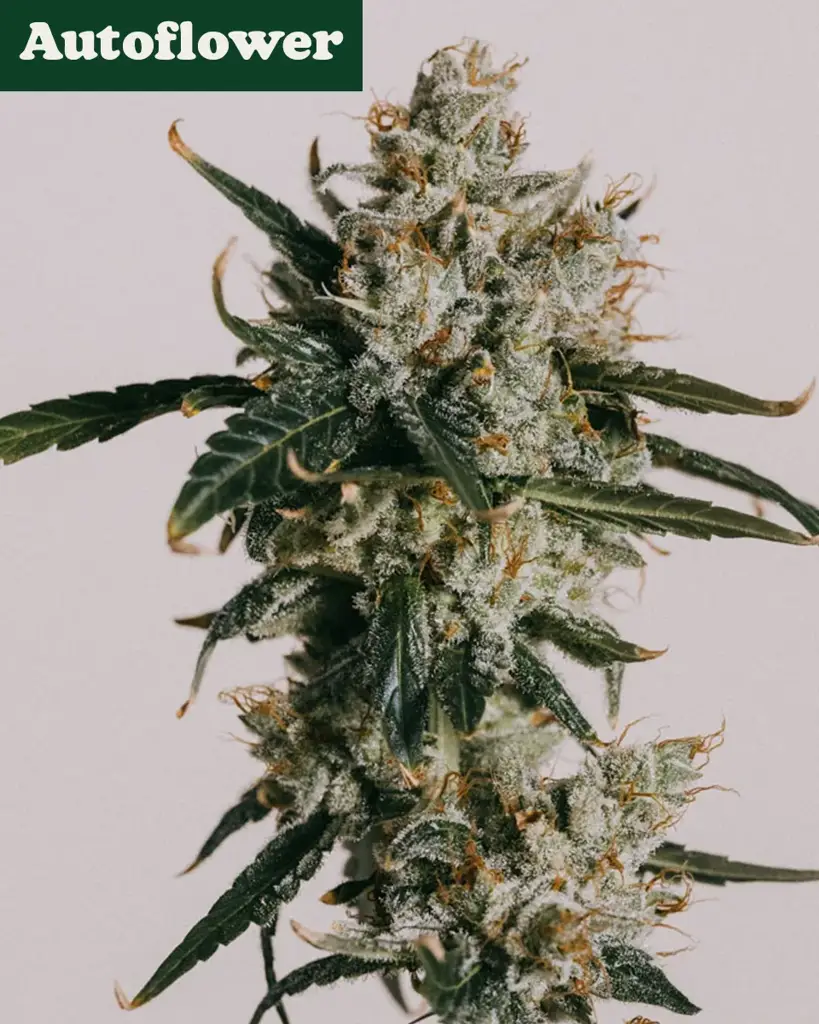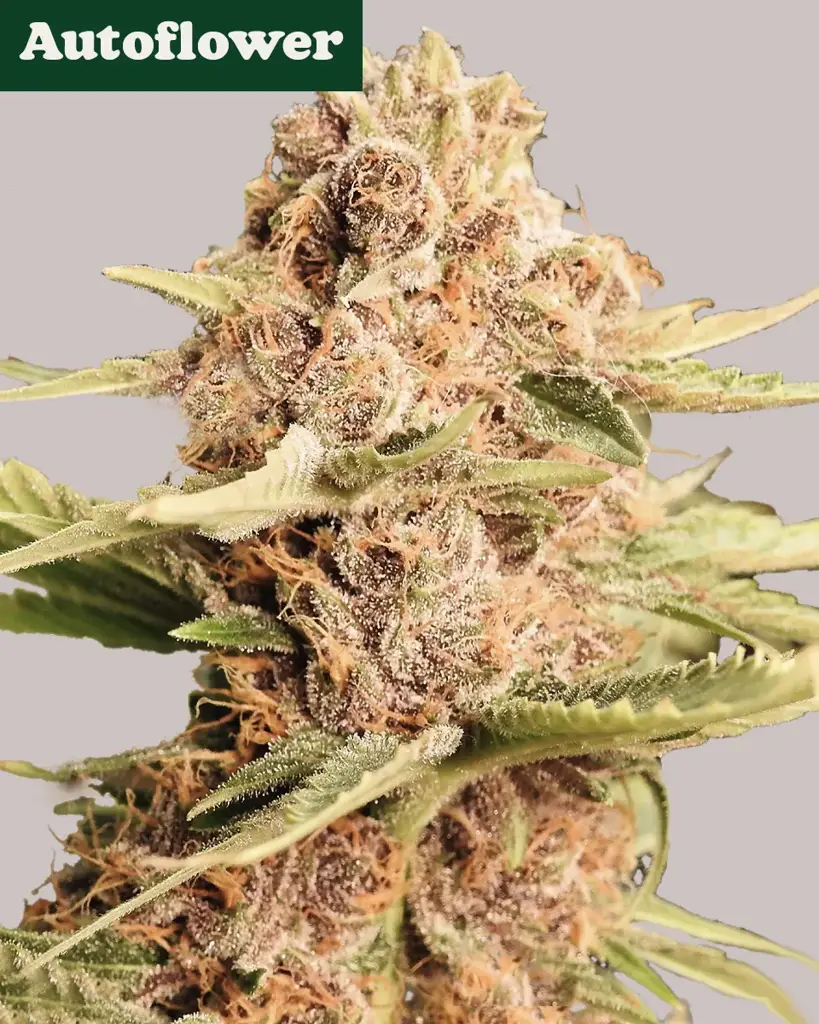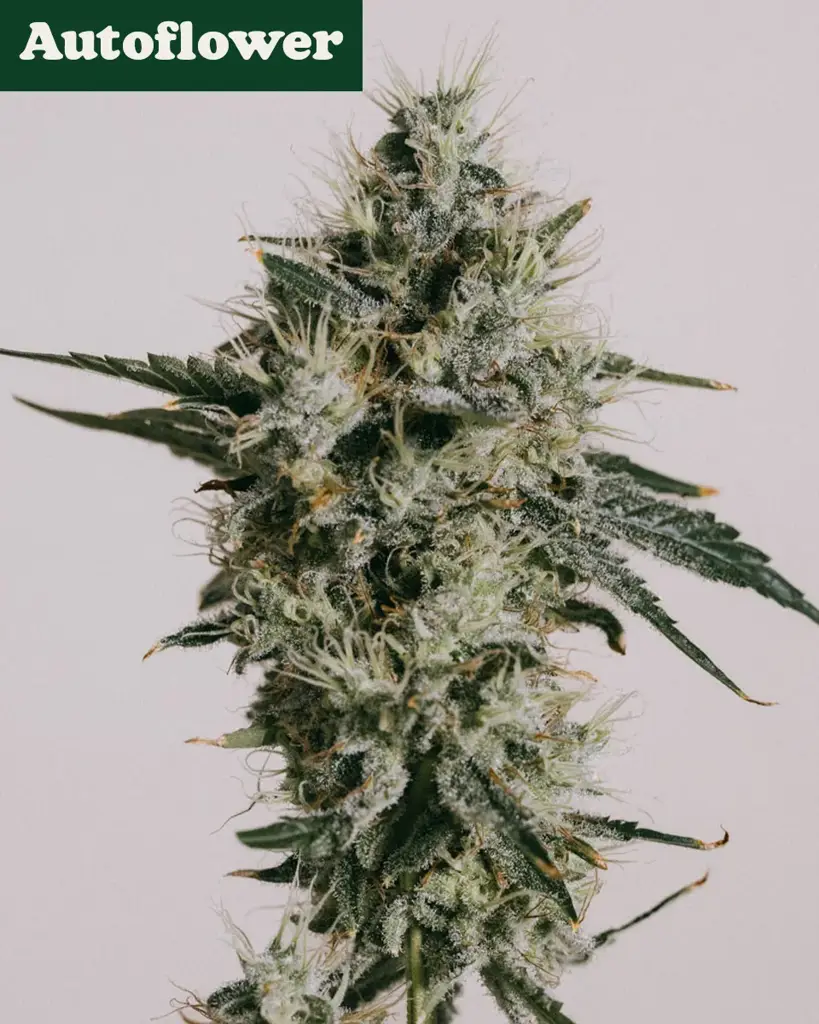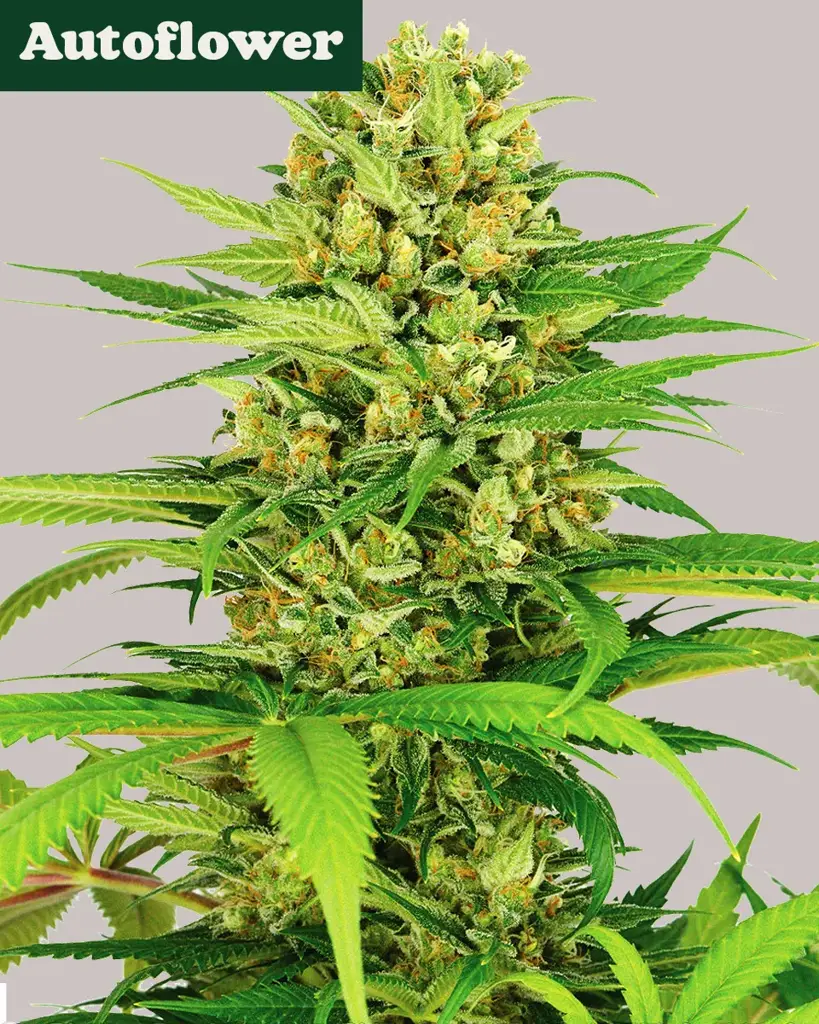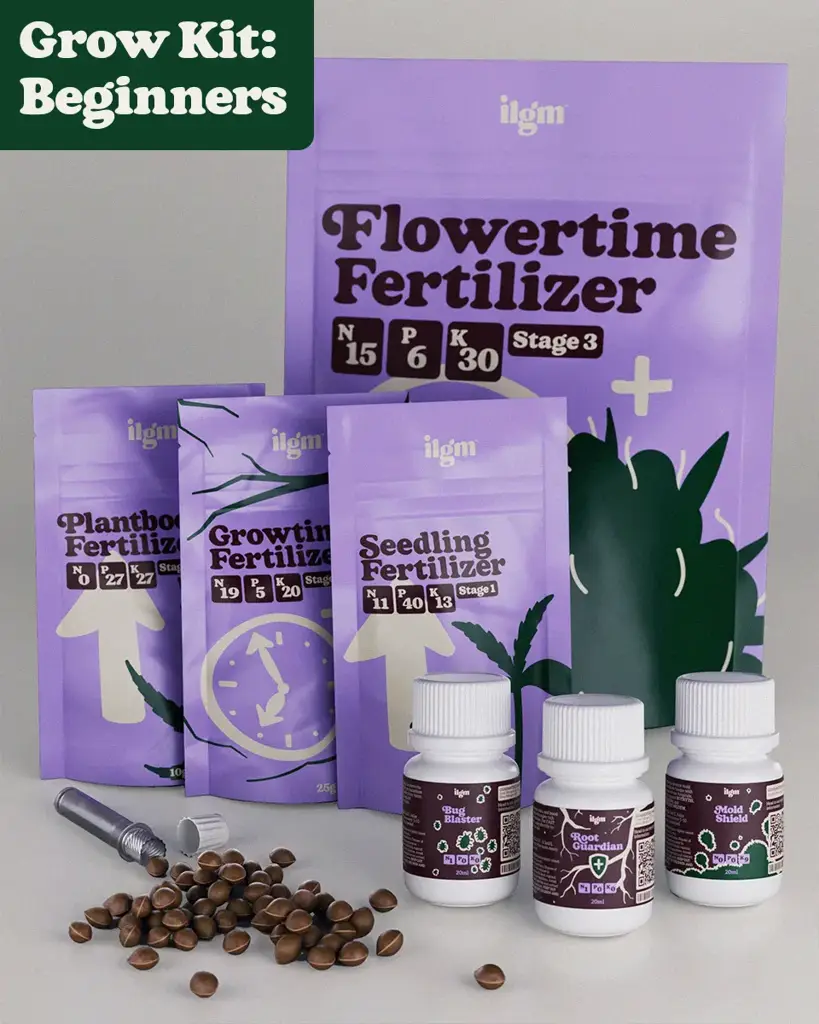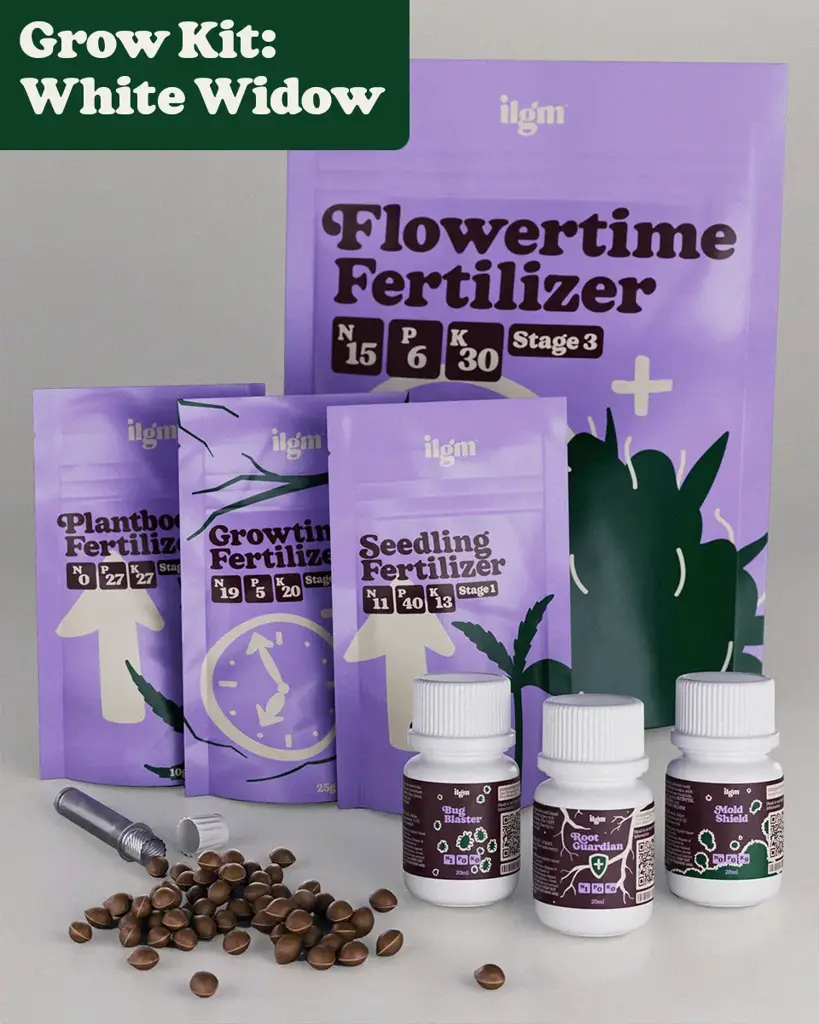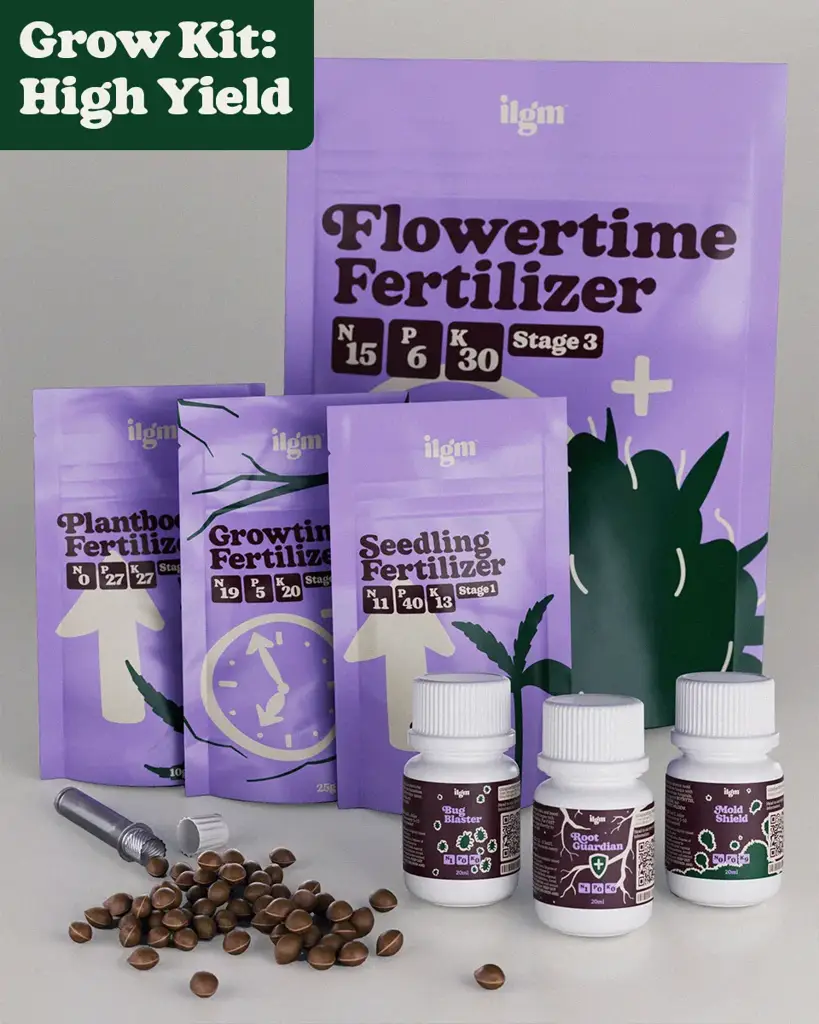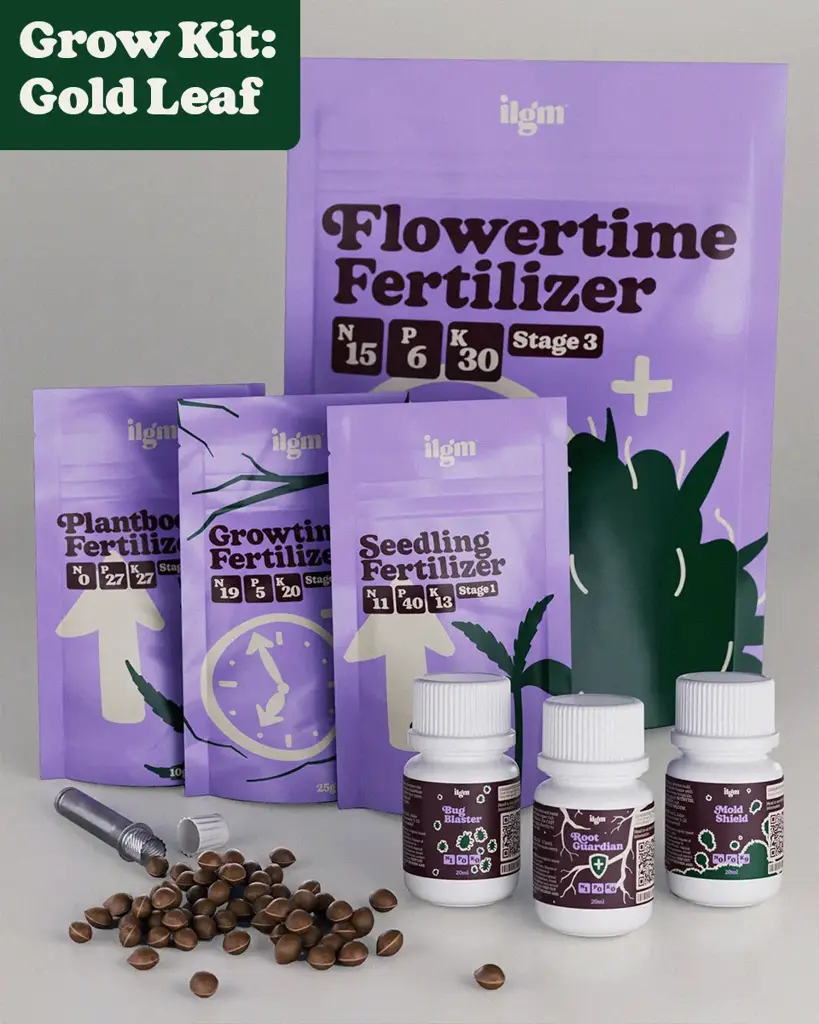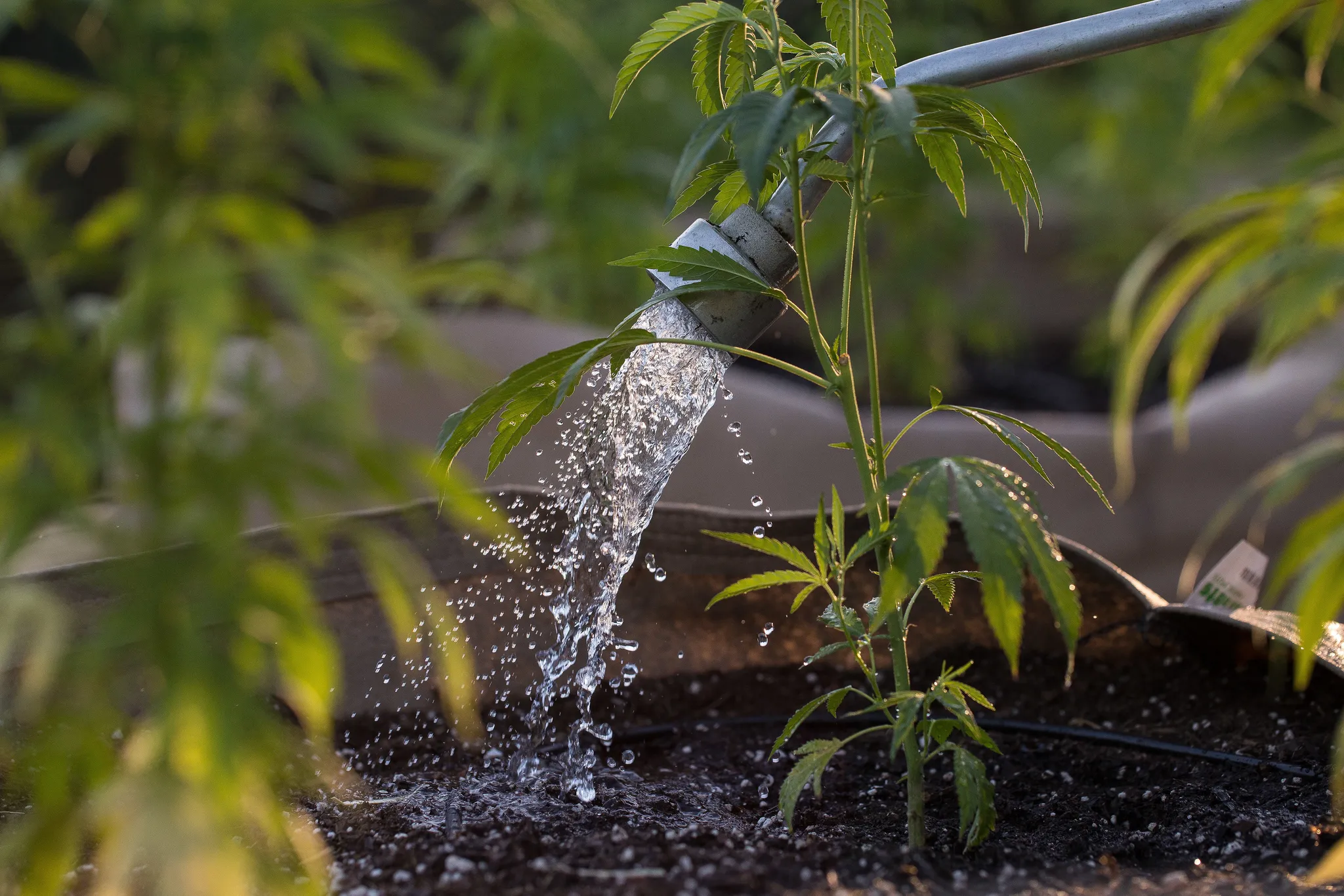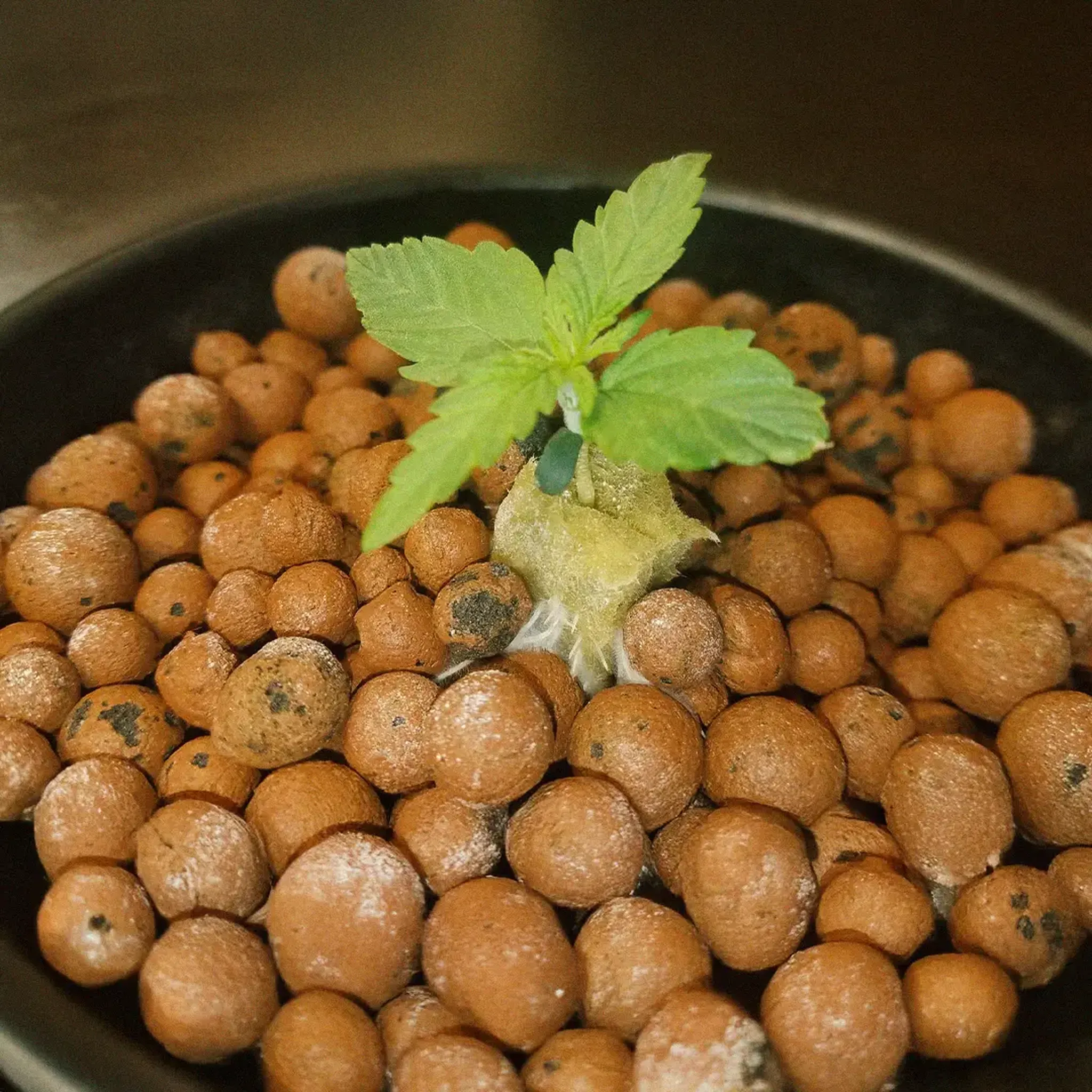
A Beginner’s Guide To Cannabis Hydroponics
Reviewed by: Stoney Tark
Soilless but not soulless: Why hydroponic cannabis is worth your time
Table of contents
Picture this: you crack open the door to your grow space and instead of bags of potting mix or the smell of compost, you’re looking at a clean, sterile setup with bright lights, bubbling water, and lush cannabis plants standing tall with no soil in sight. That’s hydroponics. It might sound futuristic, but it’s very real and very doable at home.
A lot of people think hydro is for advanced growers only. I get it—it can look a bit intimidating with air pumps, air stones, and in some cases drip lines and stakes everywhere. But the truth is, you don’t need fancy gear or a science degree to make it work. You just need to understand the basics and start with the right system. If you’re new to growing or just curious about skipping the soil, this guide is for you.
TL;DR
Hydroponics is a clean and efficient way to grow cannabis without using soil. It can speed up growth, massively boost yields, and be surprisingly easy if you start with a beginner-friendly system. From passive setups like wick systems to active ones like DWC, I’ll walk you through the options, setup, and how to steer clear of common problems like root rot and pH issues.
What is hydroponic cannabis growing?
Hydroponic cannabis growing means feeding your plants through water using a soilless growing medium instead of soil.
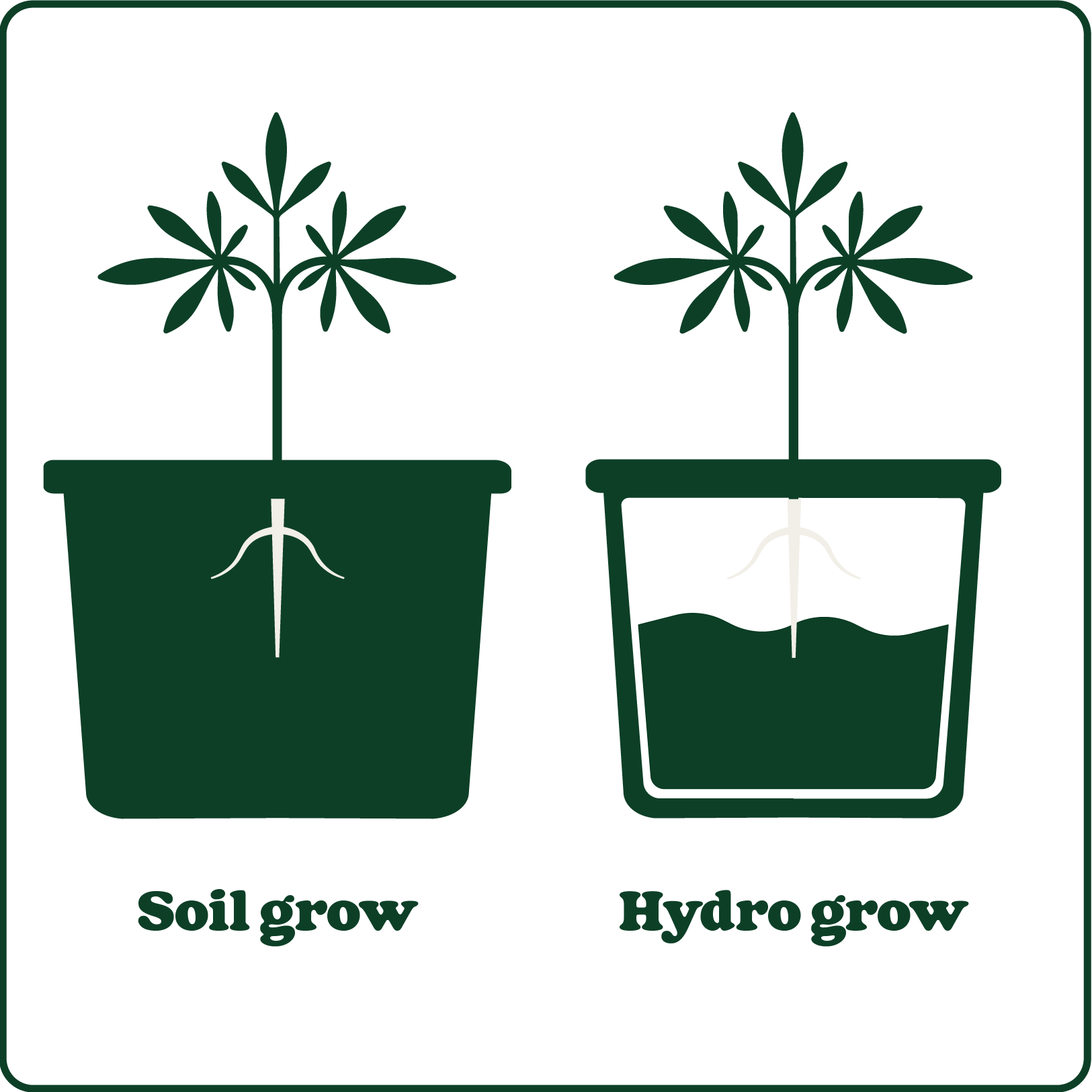
Instead of digging into dirt, you place cannabis roots in water that’s been mixed with nutrients, or you anchor them in a sterile medium like clay pebbles, rockwool, or coco coir. That water delivers nutrients directly to the roots, which means faster uptake, faster growth, and bigger harvests.
Growing cannabis this way touches on a bit of science—you’re managing root development, nutrient absorption, and pH balance all in one. Sounds a bit technical, but don’t worry. We’ll keep it straightforward.
Our Bestsellers
Which hydro system is best for beginners?
If you’re just getting started, go simple. Then level up.
Lvl 1. Wick Systems: This is about as simple as it gets. No pumps or moving parts. A wick pulls water up to your plant. It’s great for smaller grows or autoflowers, but it doesn’t offer much oxygen for the roots. Not ideal for bigger plants or long veg times.

Lvl 2. Kratky Method: Another no-electricity setup. You fill a reservoir, drop your plant in, and leave an air gap between the water and the net pot so roots can breathe. It works best with quick-growing plants and is a fun way to learn without much hassle.
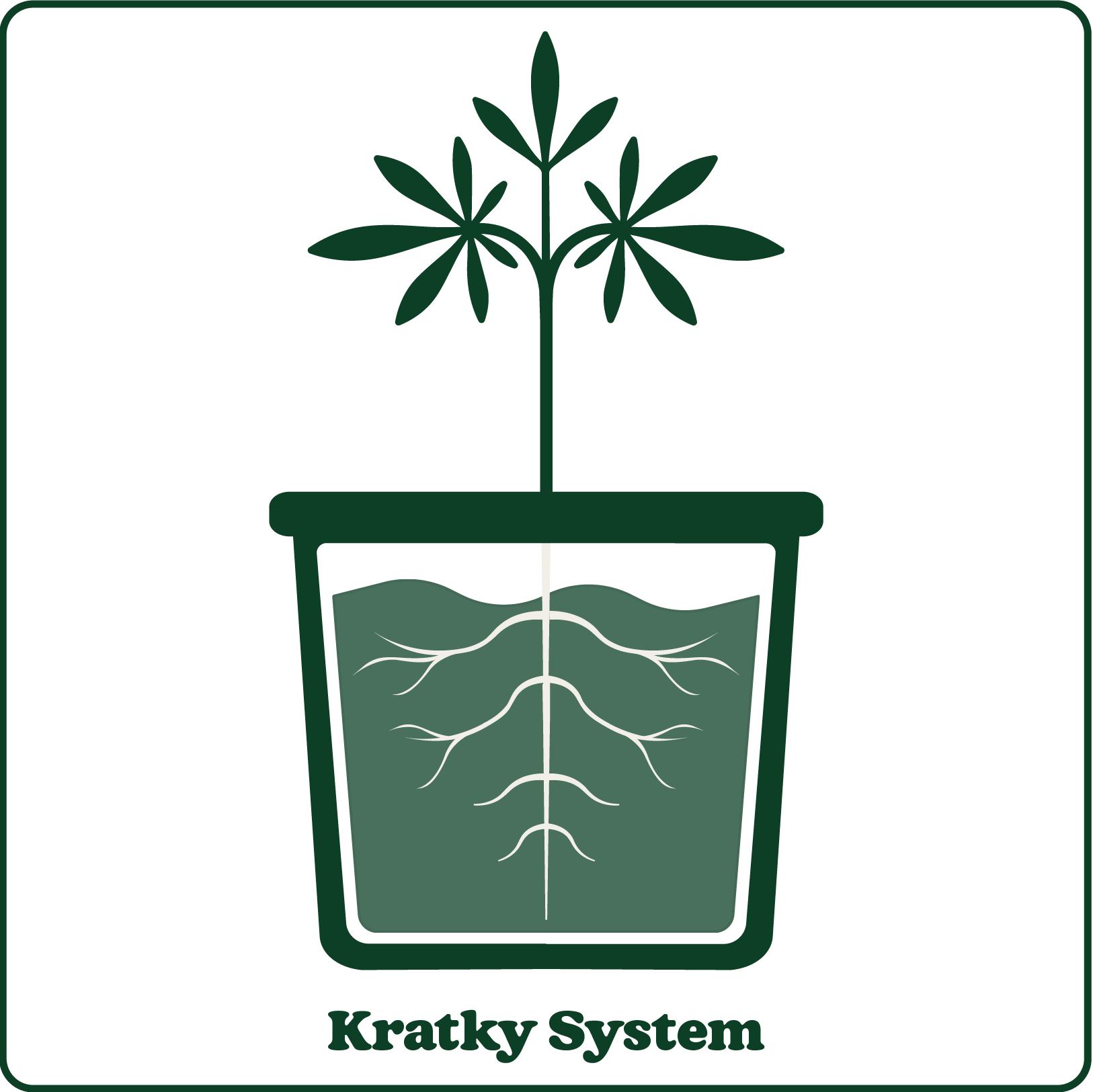 z
z
Lvl 3. Deep Water Culture (DWC): This one uses an air pump to keep oxygen in the water, where the roots are fully submerged. It’s fast, efficient, and a solid next step for growers who want more control. But you’ll need to stay on top of pH, clean your system regularly, and deal with a bit more gear.
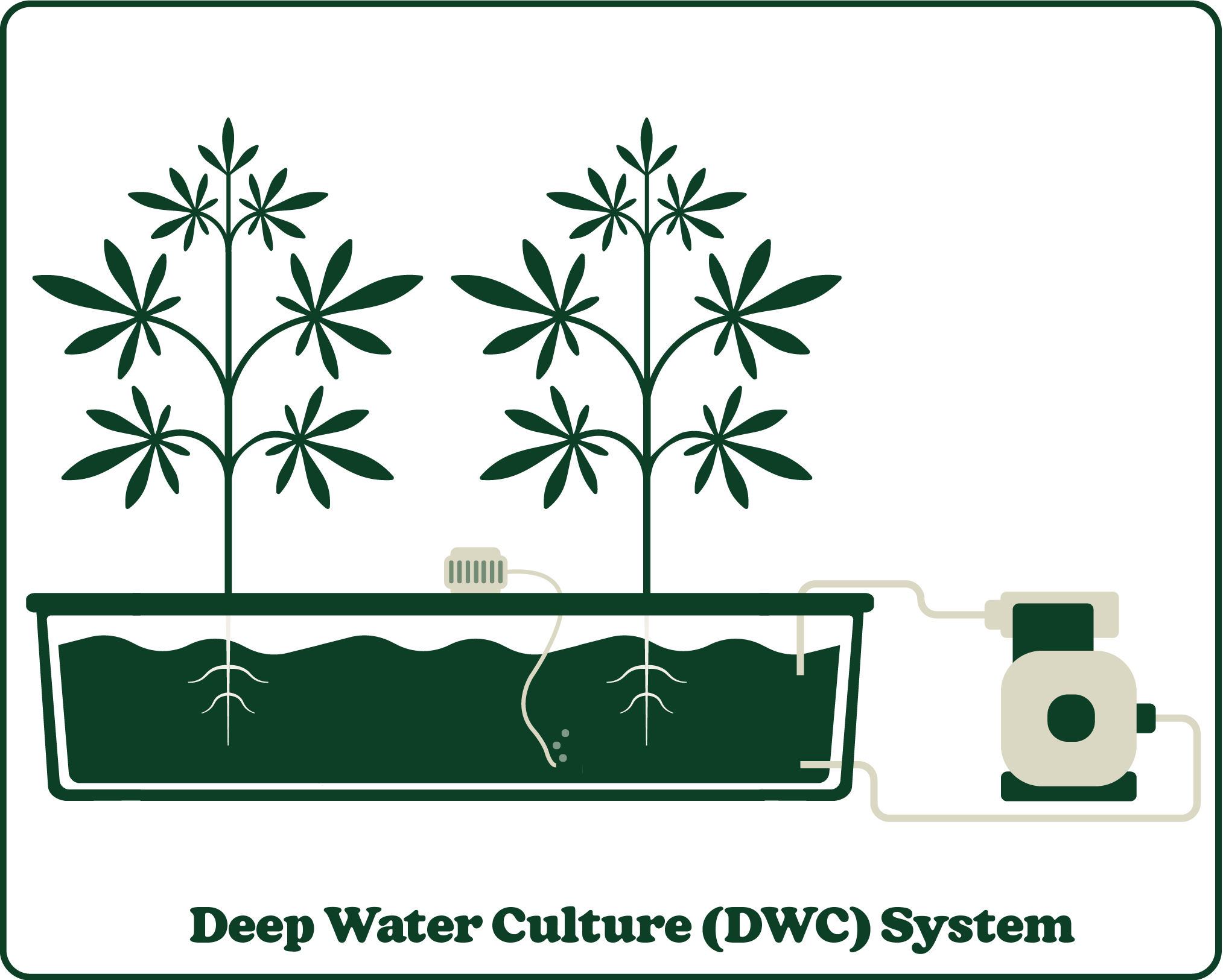
Lvl 4. Ebb & Flow: This setup uses a timer to flood and drain the root zone. It’s great for bigger grows, Sea of Green setups, and can deliver strong results. But with more equipment, there’s also more that can go wrong if you’re not paying attention.
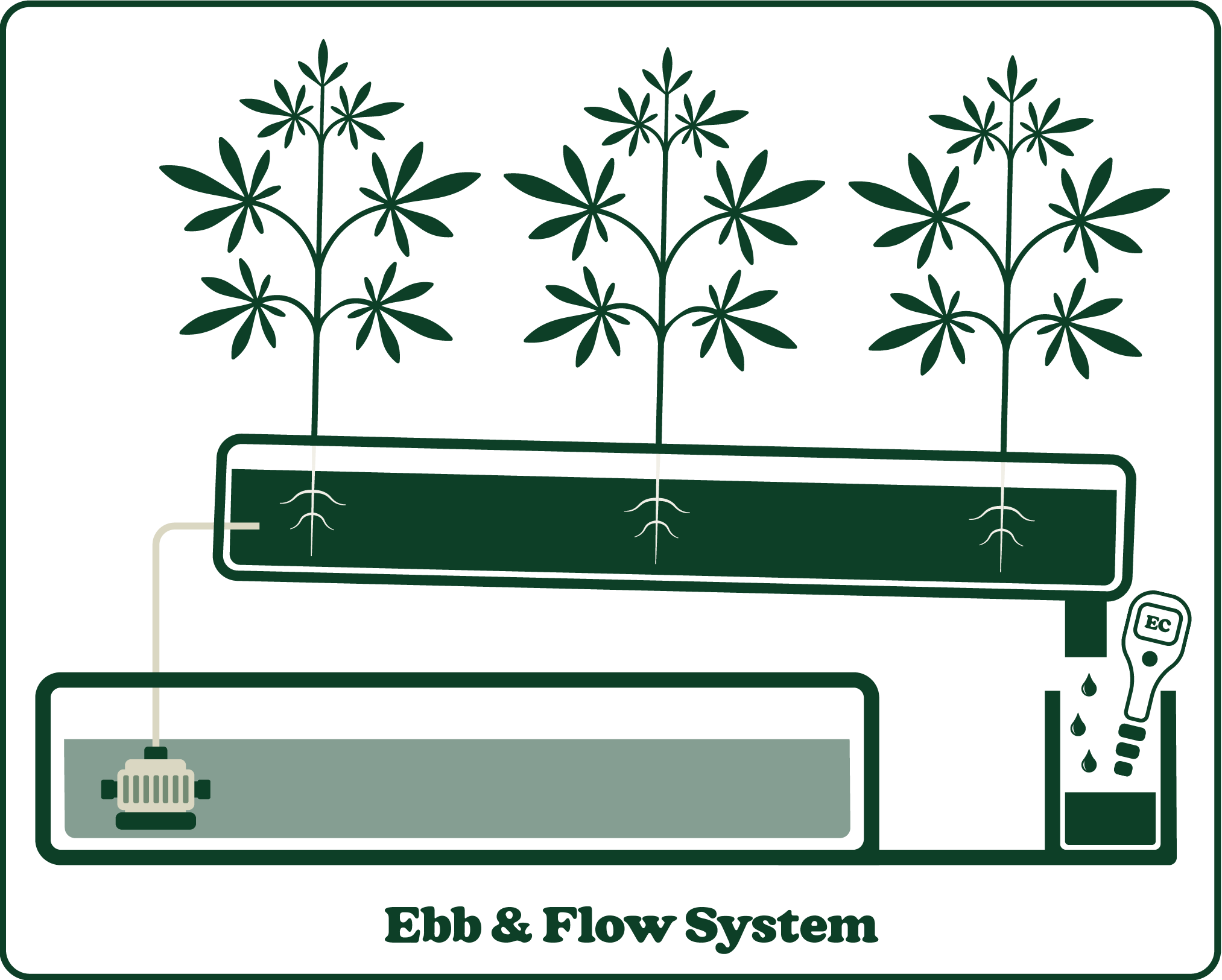
Lvl 5+ Others: You might hear about NFT, aeroponics, or even aquaponics. They’re cool but finicky. I don’t recommend them for your first run.
Community tip: “I started with a Kratky lettuce bucket and ended up flowering an autoflower in it. Worked surprisingly well!” — r/microgrowery
What do you need to set up a hydro cannabis grow?
You don’t need a full lab. Just a few core components to get started.
Here’s your basic list:
Reservoir: A food-safe bucket, tote, or bin to hold your nutrient solution
Medium: Something like clay pellets, coco coir, or rockwool to anchor your plant
Wick or net pot: This depends on the system you choose
Nutrient solution: Cannabis-friendly hydroponic nutrients with a balanced NPK ratio and micronutrients
pH and EC meters: These help you track and adjust water chemistry
Air pump and air stone (for DWC): Keeps your water oxygen-rich
Optional gear: A grow tent, LED light, fan, and something to control humidity if you're indoors
Pro tip: Use reverse osmosis or filtered water. It keeps minerals and other junk out, which helps prevent pH problems later on, and keeps the EC level as low as possible.
First Grow?
How do you feed cannabis in hydroponics?
You’re feeding through water, so precision matters.
In hydro, there’s no buffer like soil. Every nutrient goes straight to the roots, which makes it powerful but also a little unforgiving if you mess it up. Most growers use pre-made cannabis nutrients, especially designed for hydroponics, which makes mixing easier.
Here’s a simple guideline:
| Growing Stage | Nutrient focus | pH value | EC value |
|---|---|---|---|
| Vegetative stage | Nitrogen | 5.8 - 6.0 | 0.8 - 1.2 |
| Flowering stage | Phosphorus and Potassium | 6.0 to 6.2 | 1.2 to 2.0 |
| Harvesting stage | - | 6.0 to 6.2 | Lower EC or flush with clean water 1 to 2 weeks before chop to avoid harsh smoke |
What are the common problems with hydro cannabis — and how do you fix them?
Hydro can go sideways fast if you’re not paying attention. But most problems have easy fixes.
Root rot: Roots turning mushy and smelling funky? That’s usually root rot. Keep water temps between 64–68°F (18–20°C), use clean gear, and oxygenate your reservoir with an air stone and air pump.

Brown roots: Not all discoloration means disease. Nutrients can stain roots. If it doesn’t stink, it might just be the nutes, but monitor them frequently to be sure.
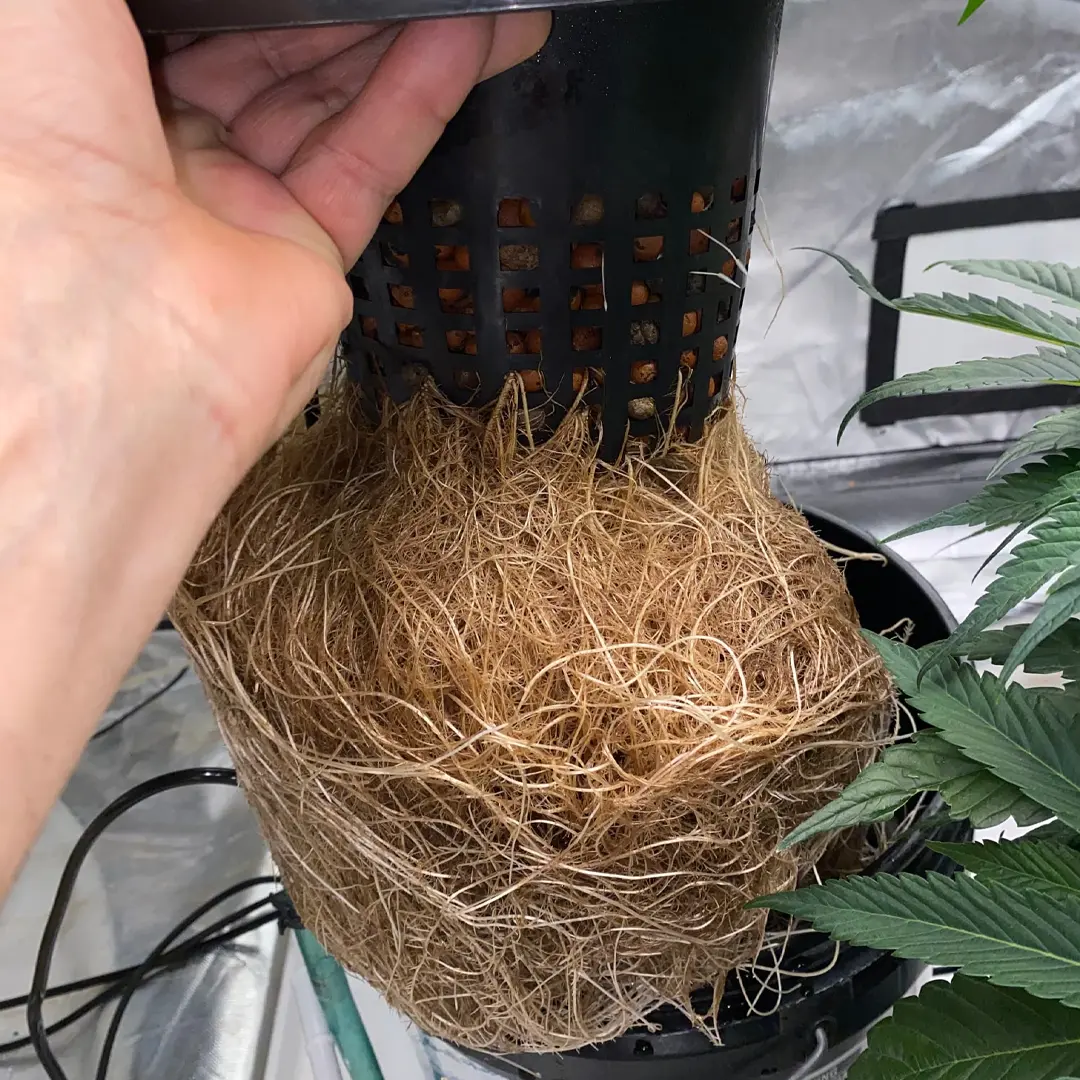 Brown roots example, courtesy by LateNightGardner
Brown roots example, courtesy by LateNightGardner
pH drift: Happens a lot in hydro. Check your pH daily and adjust in small steps using pH up/down solutions, using drops each time.
Clogged pumps or lines: If your system uses pumps and air stones, clean them weekly and use reverse osmosis filtered water to avoid buildup.
Nutrient lockout: If your plant looks hungry even though you’re feeding it, it could be pH or salt buildup blocking nutrient uptake. Flush with pH-adjusted clean water and recalibrate your feed.
Community Tip: “My first DWC stank like feet. Learned the hard way: more bubbles, less heat.”
Is hydroponics better than soil for cannabis?
Sometimes. It depends on your setup and what you care about most.
Hydro might be your best bet if you want to grow in a tight space or push for yield. It’s faster, cleaner, reduces vegetation time and gives you full control. But soil is more forgiving. You can miss a watering, and your plant won’t freak out. That’s why a lot of folks stick with soil—especially if they want to grow organically or keep things simple.
Hydro advantages:
Quicker veg and flower times
Bigger yields (if dialed)
Less mess in your grow space
Tight control over feed and water
Optimal for small plant counts
Soil advantages:
More forgiving with pH and feeding
Less equipment to manage
Often preferred by growers who care most about flavor and terpene depth
Soil can be recycled after each harvest.
FAQ
Q: What’s the easiest hydroponic method for cannabis?
A: The wick system. It’s passive, simple, and works well for learning the basics, and ideal for growers who may need time away from their grow room.
Q: Can I grow hydro weed without an air pump?
A: You can if you’re using Kratky or a wick setup. But growth might be slower and less vigorous, and require checking on root health more frequently.
Q: Why are my roots brown in hydro?
A: Give them a sniff. If it smells bad, it’s probably rot. If it smells earthy or like nutes, it might just be staining. If in doubt, use 10% hydrogen peroxide in the reservoir.
Q: Do I need to flush hydroponic cannabis?
A: Yes. Flushing helps remove excess salts and brings out better flavor before harvest. You only need to flush for 7 days with hydro.
Q: Is hydroponic cannabis stronger?
A: Not by default. Potency comes from the genetics, your grow skills, and your timing. The method just helps unlock that potential.
*Main image courtesy by Bubbala


